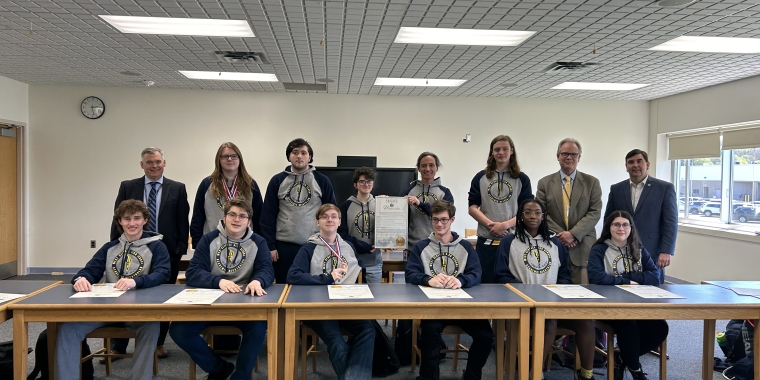
Onondaga County Soil & Water begins water chestnut removal June 21 in Seneca River, Cross Lake
ONONDAGA COUNTY — The Onondaga County Soil and Water Conservation District is finally seeing some progress in its years-long battle against water chestnuts in the Seneca River and Cross Lake areas thanks to hand-pulling and mechanical harvesting.
In years past, New York State provided some funding to the Onondaga County Health Department to spray the Seneca River with herbicide to keep water chestnuts at bay. When the state withdrew funding in 2021, Onondaga County committed $50,000 toward remediation. This year, NYS Sen. John Mannion secured $100,000 in the state budget to combat water chestnuts, and Onondaga County is matching that figure.
Using $100,000 from Onondaga County, Soil and Water has signed contracts with two mechanical harvesting firms, CNY Aquatic Harvesting and Enviro-Aquatics. According to OCSWCD Executive Director Mark Burger, mechanical harvesting will begin in late June or early July.
“We’ll work right through August. We normally shut down right before September because the plants have completed their life cycle,” Burger said.
Soil and Water’s two hired hand-pullers will begin yanking the invasive plants out of the river later this month. Their first day out on the water is June 21, Burger said.
According to a 2021 OCSWCD report provided by Onondaga County Legislator Ken Bush Jr. (13th District), Soil and Water removed over 1.6 million pounds — 819.37 tons — of water chestnuts from the waterways last year. Paid and volunteer hand-pullers collected 45,740 pounds.
“It is an endless, endless challenge. … It’s a terrible environmental and economic situation. People cannot get out of their docks. You can see the plants clogging up the water,” said Bush, whose district includes Van Buren and Elbridge, home to the Seneca River and Cross Lake.
In years past, local farms such as Half Full Dairy in Elbridge and Emmi Farms in Baldwinsville have turned the water chestnut haul into fertilizer, Bush said.
Burger said he has seen some encouraging progress in the last couple of years.
“The plant growth is ahead of schedule this year, but we are not seeing as many plants growing,” he said. “The important part is to thank everybody who has helped out in years past. The progress we’re seeing is attributed to everyone’s efforts.”
The water chestnut (Trapa natans) is an invasive species originally found in Europe, Asia and Africa. According to the New York State Department of Environmental Conservation, water chestnuts were first brought to the United States in the 1800s as ornamental plants. But behind the water chestnut’s rosette of serrated leaves and dainty white flowers was a threat to boaters, swimmers and the ecosystem.
Rooted to the bottom of shallow lakes, ponds and rivers, water chestnuts grow into large mats that choke out native aquatic plants and pose obstacles to boats. Each rosette produces as many as 20 spiny nuts that can injure swimmers. When water chestnuts decompose, they can reduce oxygen and kill aquatic life.
“This year’s seed pod is next year’s plant growth,” Burger explained, adding in an email to the Messenger that the seeds from a single water chestnut plant potentially could produce as many as 300 plants the next year.
“I can’t emphasize how important this effort is. Otherwise, the invasive plant will take over our waterways,” Bush said.
Burger likened invasive species management to mowing one’s lawn every week.
“You’ll never be able to walk away from it, but we want to get it down to a manageable level,” he said.
As for using the herbicide Clearcast (imazamox), Burger said the Oswego County Soil and Water Conservation District sprays from the Three Rivers area to Phoenix.
“We don’t do much spraying. Oswego Soil and Water’s got a very robust program as well. We pay for the spraying on the Onondaga County side so that works out very well,” Burger said. “It works very efficiently. [District Manager] Joe Chairvolotti up there runs a real good program.”
In addition to working with Oswego, Wayne and Cayuga counties, Onondaga County Soil and Water needs residents to pitch in as well. Burger encourages people to join hand-pulling efforts or, if they can afford to do so, hire a contractor to harvest or spray for water chestnuts around their private docks.
“A lot of the homeowners associations, lake associations — they’ve been great assets in this fight against water chestnuts and other invasive species,” Burger said.
To learn more about water chestnuts and other invasive species in New York State, visit dec.ny.gov/animals/265.html.


